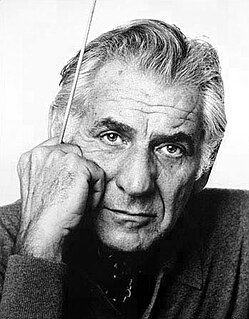
The Symphony No. 9 in D minor, Op. 125, also known as Beethoven's 9th, is the final complete symphony by Ludwig van Beethoven, composed between 1822 and 1824. It was first performed in Vienna on 7 May 1824. One of the best-known works in common practice music, it is regarded by many critics and musicologists as one of Beethoven's greatest works and one of the supreme achievements in the history of western music. In the 2010s, it stands as one of the most performed symphonies in the world.

An orchestra is a large instrumental ensemble typical of classical music, which combines instruments from different families, including bowed string instruments such as the violin, viola, cello, and double bass, brass instruments such as the horn, trumpet, trombone and tuba, woodwinds such as the flute, oboe, clarinet and bassoon, and percussion instruments such as the timpani, bass drum, triangle, snare drum, cymbals, and mallet percussion instruments each grouped in sections. Other instruments such as the piano and celesta may sometimes appear in a fifth keyboard section or may stand alone, as may the concert harp and, for performances of some modern compositions, electronic instruments.

The New York Philharmonic, officially the Philharmonic-Symphony Society of New York, Inc., globally known as New York Philharmonic Orchestra (NYPO) or New York Philharmonic-Symphony Orchestra, is a symphony orchestra based in New York City. It is one of the leading American orchestras popularly referred to as the "Big Five". The Philharmonic's home is David Geffen Hall, located in New York's Lincoln Center for the Performing Arts.

Bruno Walter was a German-born conductor, pianist and composer. Born in Berlin, he left Germany in 1933 to escape the Third Reich, was naturalized as a French citizen in 1938, and settled in the United States in 1939. He worked closely with Gustav Mahler, whose music he helped to establish in the repertory, held major positions with the Leipzig Gewandhaus Orchestra, New York Philharmonic, Concertgebouw Orchestra, Salzburg Festival, Vienna State Opera, Bavarian State Opera, Staatsoper Unter den Linden and Deutsche Oper Berlin, among others, made recordings of historical and artistic significance, and is widely considered to be one of the great conductors of the 20th century.
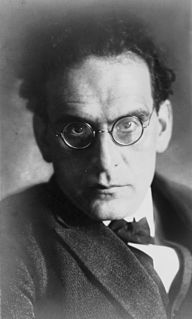
Otto Nossan Klemperer was a Jewish German-born conductor and composer, described as "the last of the few really great conductors of his generation."

Symphony No. 5 by Gustav Mahler was composed in 1901 and 1902, mostly during the summer months at Mahler's holiday cottage at Maiernigg. Among its most distinctive features are the trumpet solo that opens the work with a rhythmic motif similar to the opening of Ludwig van Beethoven's Symphony No. 5, the horn solos in the third movement and the frequently performed Adagietto.
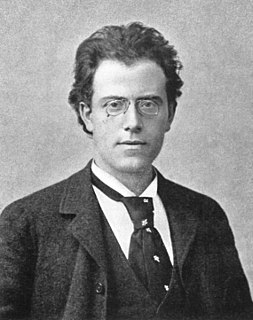
Symphony No. 1 in D major by Gustav Mahler was mainly composed between late 1887 and March 1888, though it incorporates music Mahler had composed for previous works. It was composed while Mahler was second conductor at the Leipzig Opera, Germany. Although in his letters Mahler almost always referred to the work as a symphony, the first two performances described it as a symphonic poem or tone poem. The work was premièred at the Vigadó Concert Hall, Budapest, in 1889, but was not well received. Mahler made some major revisions for the second performance, given at Hamburg in October 1893; further alterations were made in the years prior to the first publication, in late 1898. Some modern performances and recordings give the work the title Titan, despite the fact that Mahler only used this label for two early performances, and never after the work had reached its definitive four-movement form in 1896.

Eugene Ormandy was a Hungarian-American conductor and violinist, best known for his association with the Philadelphia Orchestra, as its music director. The maestro's 44-year association with the orchestra is one of the longest enjoyed by any conductor with a single orchestra. Under his baton, the Philadelphia Orchestra had three gold records and won two Grammy Awards.

Dimitri Mitropoulos, was a Greek conductor, pianist, and composer. He received international fame both as a major conductor and composer of the 20th century.

Philippe, Knight Herreweghe is a Belgian conductor.
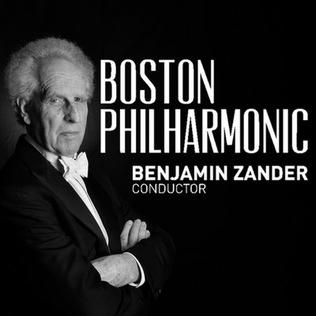
The Boston Philharmonic Orchestra is a semi-professional orchestra based in Boston, Massachusetts. It was founded in 1979 by conductor Benjamin Zander.
Kenneth Woods is an American-born, UK-resident conductor, composer and cellist. He is known for his interpretations of the works of Mahler, Haydn, Shostakovich, Beethoven, Bruckner and Hans Gál. He has conducted orchestras including the English Chamber Orchestra, Royal Philharmonic Orchestra, BBC National Orchestra of Wales, Royal Northern Sinfonia and National Symphony Orchestra.
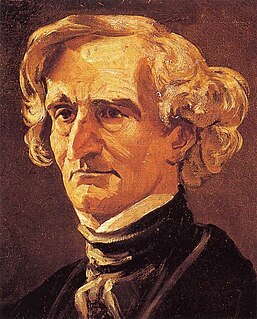
A choral symphony is a musical composition for orchestra, choir, and sometimes solo vocalists that, in its internal workings and overall musical architecture, adheres broadly to symphonic musical form. The term "choral symphony" in this context was coined by Hector Berlioz when he described his Roméo et Juliette as such in his five-paragraph introduction to that work. The direct antecedent for the choral symphony is Ludwig van Beethoven's Ninth Symphony. Beethoven's Ninth incorporates part of the Ode an die Freude, a poem by Friedrich Schiller, with text sung by soloists and chorus in the last movement. It is the first example of a major composer's use of the human voice on the same level as instruments in a symphony.
Karel Šejna was a Czech double bassist and conductor, the principal conductor of the Czech Philharmonic Orchestra in 1950.
The Dessoff Choirs is an independent chorus based in New York City. Margarete Dessoff established the organization in 1930 as the union of two choirs she directed, the Adesdi chorus and the A Cappella Singers, whence the plural Choirs. Today, the plural connotes Dessoff's various ensembles, which range from the large Dessoff Symphonic Choir, which appears with major orchestras, to the smaller Dessoff Chamber Choir, which performs in more intimate settings.


